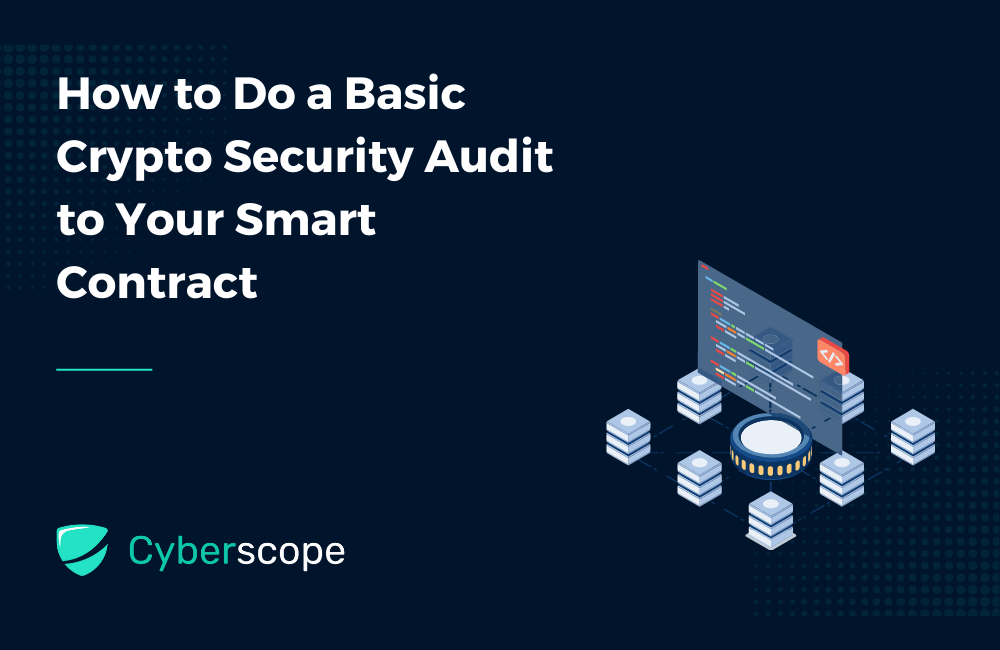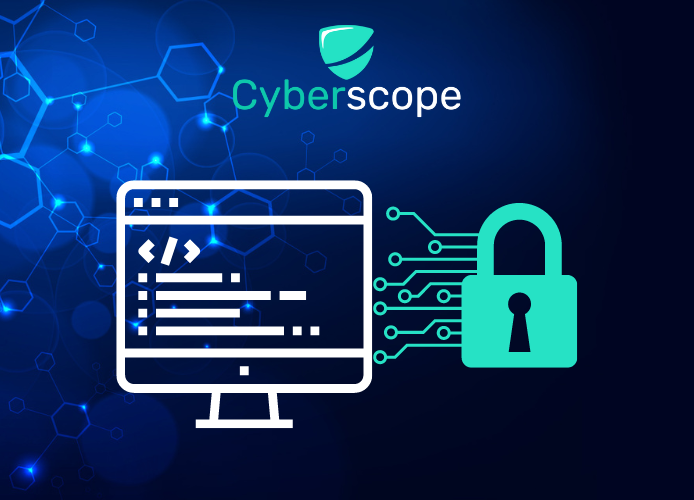

How to Do a Basic Crypto Security Audit to Your Smart Contract

Introduction
After developing a smart contract, the next step you have to follow is to make sure that everything is in working order and there are no flaws. However, when it comes to smart contracts, we are talking about simple blocks of code that run on top of a blockchain network. This means that they will follow the rules and protocols specified in the code. If something goes wrong, smart contracts may not be able to deliver what they are promising.
Auditing is an important process for ensuring the success of a business or a project. By auditing the scope, intended behavior, overall architecture and code, auditors can help ensure that all aspects of the project are up to standards and safe for the users.
In this article, we will try to give you a better understanding of how a basic crypto security audit works and why it is important in blockchain technology.
What is a Smart Contract Audit?
In a more detailed description, smart contracts are self-executing contracts with the terms of the agreement between buyer and seller being directly written into lines of code. This code is stored, distributed, and replicated on a blockchain network. Smart contracts permit trusted transactions and agreements to be carried out among disparate, anonymous parties without the need for a central authority, legal system, or external enforcement mechanism. They render transactions traceable, transparent, and irreversible.
However, just because they are “smart” doesn’t mean they’re foolproof. A security audit is an integral part of smart contract security. As an ecosystem like this is inextricably linked with its code, a security analysis of the smart contracts is an essential asset to secure its functionality. This is the point where security audits come into play.
A crypto security audit is a process of checking a contract’s source code for any defects, in order to ensure that it is functioning as intended and is not susceptible to errors. Through automated audits and manual checks of the code, the auditors can acquire a detailed overview of the overall functionality of the contract and its purpose. In addition, a thorough review of the code structure will spot dangerous security fractures that can be abused in a malicious way.
Why is a Smart Contract Audit Important?
Α crypto security audit is of big importance to developers as it allows them to check for vulnerabilities in their code that could possibly be exploited by external actors and provide them with a solution on how to fix them. In that way, they can ensure that the contract cannot behave in ways that it was not meant to.
Smart contracts are different from other programs because they typically involve finances. In every function execution, a transaction is recorded on the blockchain involving fee consumption. Thus, a faulty smart contract will contain errors that may allow hackers to steal the crypto stored in it. A crypto security audit report can offer the investors and users of the contract a sense of trust and reassurance that they can interact with the contract safely.

How to audit a basic smart contract?
The process of a basic crypto security audit could be divided into 8 steps described below:
1. Requirement Gathering and Scope Definition
In order to properly audit a project, access to key documents is essential. These can include the business requirement document, project whitepaper/ yellow paper, technical specification document, and smart contract code. Other relevant information may also be taken into account, such as the overall architecture and intended business behavior. All of this contributes to determining the audit scope and its eventual goal.
2. Unit Testing
Unit testing is an important software development technique that helps ensure the quality of the code. By isolating individual pieces of code (units), auditors can more easily identify and fix errors and prevent them from becoming major problems.
3. Automated Data Processing and Analysis
An automated security vulnerability scanner can be a valuable tool in assessing the security of your smart contract. It can give the auditor a head start on deciphering the code before the manual analyzing approach, by identifying potential bugs and vulnerabilities. There are plenty of automated auditing tools online that can prove useful like Cyberscan and CoinTool.
4. Manual Auditing
Manual code analysis is a process where experienced developers examine the code line by line in order to check for potential issues. This approach is more complex and thorough than other methods and can help to detect hidden problems that may not be apparent from simply inspecting the code with an automated tool.
5. Contract Structure Misuse
As with any piece of code, smart contracts are not perfect. One of the ways they can be misused is by using the wrong code structure. In the scope of the Audit, these misuses must be spotted as they can lead to errors and weak points that can be abused by hackers.
6. Contract Logic Concerns
Following the structure misuse, it is also important for logical concerns in the contract code to be analyzed and fixed in order to prevent external actors from taking advantage of them for their own purposes.
7. Optimization Via Gas Analysis
The Auditing process is not limited to blockchain security. It also looks at efficiency and optimization. Contracts may require a number of transactions to complete their function, incurring gas fees -charges that are required for a transaction to be completed in the blockchain- that can be costly. Inefficient steps will add extra cost to the transactions. Furthermore, unreasonable max gas limits in the contract may result in security breaches and transaction reverts.
8. Final Report
After a smart contract has undergone testing, automatic analysis, and human evaluation, an audit report is created. This report includes any vulnerabilities or problems that were found during the auditing process and recommendations on how to fix them. The audit team and the project team can then discuss the findings of the report and the level of their severity. This conversation helps project managers and developers to understand the issues identified by the audit team.

Conclusion
There are many ways to approach smart contract auditing, but the overall goal is always to ensure that the smart contract will function as intended and that there are no vulnerabilities that could be exploited by malicious actors. Thanks to the development of advanced tools to automate smart contract auditing, the process is becoming easier over time. However, we are still some way off from having a sophisticated enough ecosystem to reach the level, manual auditing can. To ensure a professional result it is always better to reach high-profile auditing firms like Cyberscope.
Recent Posts


How Secure are Solana Smart Contracts?
2 months ago
Rust Security Audits: A Complete Guide
3 months ago
